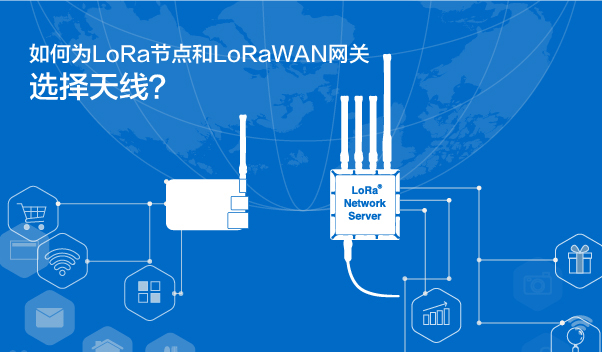The antenna is a key part of the RF chip. When LoRa devices (such as LoRa nodes and LoRaWAN gateways) transmit and receive data, the frequency band used is also in the radio frequency band, so the choice of antenna is also particularly important.
1. Basic knowledge of antenna
Common antennas are PCB on-board antennas, ceramic antennas, spring antennas, rod antennas, fiberglass antennas, and suction cup antennas.
The performance of the antenna mainly has the following parameters: impedance, standing wave ratio, antenna gain.
The standard value of impedance is 50 ohms and the standing wave ratio is 1. The marks are perfectly matched, the greater the antenna gain, the better.
2. Second, how to choose the antenna
When choosing, the shape of the antenna itself is not the most important.
What is important is the limitation of parameters, on-site environment and structure.
For the LoRa node, since most of the projects require the structure of the LoRa node to be small, the LoRa node generally selects the spring antenna .
For LoRaWAN gateways, there is no requirement for the size of the gateway in practical use, so LoRaWAN gateways are generally not limited by volume. Therefore, when selecting antennas, it is recommended to use fiberglass antennas . Because the glass fiber reinforced plastic antenna has good electrical insulation, strong wave permeability and good signal, therefore, regardless of the size, the glass fiber reinforced plastic antenna is preferred.
In addition, for the outdoor LoRaWAN gateway, the environment is relatively harsh, and the FRP weather resistance is strong, corrosion resistance, UV resistance, aging resistance, impact resistance, and it still performs well in harsh environments with high temperatures and low temperatures of -45 to 110 degrees, and more It can be adapted to various complex environments, therefore, it also makes people more inclined to choose fiberglass antenna for LoRaWAN gateway.
3. Precautions for using antennas
The antenna should be placed as far away from the ground as possible, and not close to large metal objects.
In addition, the frequency band actually used by the LoRa antenna should be consistent with the frequency range supported by the LoRa antenna.
For example, the 915M antenna should be used in the 915M frequency band. If the 915M antenna is used in the 868M frequency band, the effect will be poor.
Finally, you need to pay attention to the antenna feeder, ufl to sma transfer cable, the length of the suction antenna cable, etc. Especially when the line length is long, you need to fully consider the attenuation effect of the wire on the signal.
For more information, please visit the official website of Shenzhen RAKwireless Technology Co., Ltd. RAKwireless.com, you can also send an email to info@rakwireless.com for consultation.

